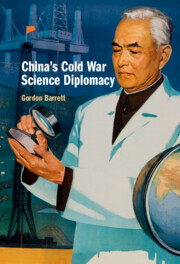Book contents
- China’s Cold War Science Diplomacy
- China’s Cold War Science Diplomacy
- Copyright page
- Dedication
- Contents
- Tables
- Acknowledgements
- Note on the Text
- Abbreviations
- Introduction
- 1 A Scientific United Front at Home and Abroad
- 2 Between Pugwash and the Party-State
- 3 ‘Friends and Comrades, We Fight against Imperialism’
- 4 Linking the Local, National, and International
- 5 A Spectrum of Propaganda and Scientific Exchange
- Conclusion
- Select Bibliography
- Index
Conclusion
Situating Scientists in China’s Foreign Relations
Published online by Cambridge University Press: 18 August 2022
- China’s Cold War Science Diplomacy
- China’s Cold War Science Diplomacy
- Copyright page
- Dedication
- Contents
- Tables
- Acknowledgements
- Note on the Text
- Abbreviations
- Introduction
- 1 A Scientific United Front at Home and Abroad
- 2 Between Pugwash and the Party-State
- 3 ‘Friends and Comrades, We Fight against Imperialism’
- 4 Linking the Local, National, and International
- 5 A Spectrum of Propaganda and Scientific Exchange
- Conclusion
- Select Bibliography
- Index
Summary
Scientists had a distinctive part to play in the Chinese Communist Party’s foreign relations prior to it coming to power as well as during the early decades of the People’s Republic. The Conclusion considers the significance of this sustained party and party-state interest in scientists’ international activities for subsequent developments from the 1970s through China’s rise as a science and technology power by the early twenty-first century. These relations did not just spring out of nowhere, fully formed, and ready to go with the onset of rapprochement. Nor were they simply a product of long-term Americanisation. Consequently, the Conclusion explores notable areas of continuity and others of revived relevance when it comes to the party-state and the spectrum of international activities undertaken by scientists.
Keywords
- Type
- Chapter
- Information
- China's Cold War Science Diplomacy , pp. 214 - 230Publisher: Cambridge University PressPrint publication year: 2022

